How To Remove Pinion Yoke Nut
The pinion seal, also called a pinion shaft, is designed to go on oil in and any h2o, dirt or debris out. As long every bit the pinion seal is in place and performing well, the differential will stay in skilful shape and operate as it is supposed to. A failed pinion seal tin can result in a minor leak where fluid seeps out, or a major leak that can ruin the differential bearings and gears. As long as the seal is replaced in a timely manner, at that place will exist little adventure of any internal damage taking identify.
Materials Needed
- ⅜ Ratchet
- ⅜ Socket set - Metric and Standard
- ½ Ratchet - at least a 18 inches long for leverage
- ½ Breaker bar - 24 inch
- ½ Socket set - Metric and Standard
- ½ socket for pinion nut - this volition need to exist determined when disassembling
- Ball peen hammer
- Brake cleaner
- Bleed pan
- Gear oil
- Jack
- Jack Stands
- Mallet/plastic hammer
- Metric wrench fix
- Paint marker
- Pinion Seal
- Puller ready
- Repair Transmission - For torque specifications
- RTV Silicone
- Seal puller
- Shop towels
- Standard wrench set
- Wheel Chocks
Function 1 of 8: Securing your vehicle
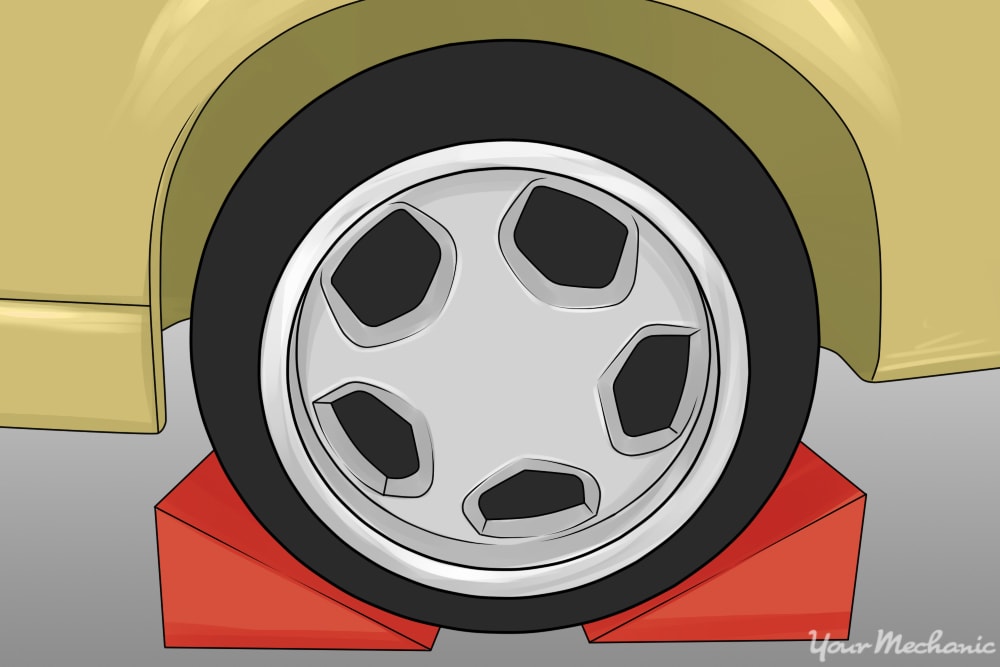
Step one: Chock the front end wheels. Information technology is recommended to lift your vehicle on apartment ground. Brimming the front and rear of one front tire to prevent your vehicle from rolling forward or backward.
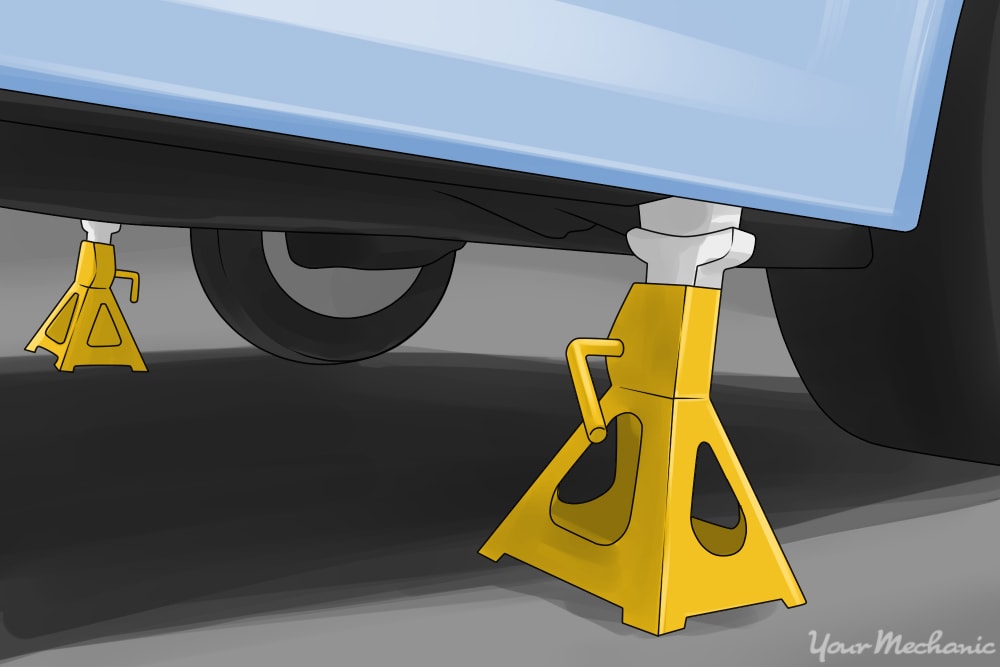
Step 2: Raise the axle. Raise the axle loftier enough that yous are comfortable working underneath.
Pace 3: Fix the jack stands. Set the jack stands securely under each side of the axle.
Part 2 of 8: Removing the driveline
Step 1: Set the parking brake. Ready the parking brake on your vehicle. This will stabilize the beam to go on it from moving and volition help in the process.
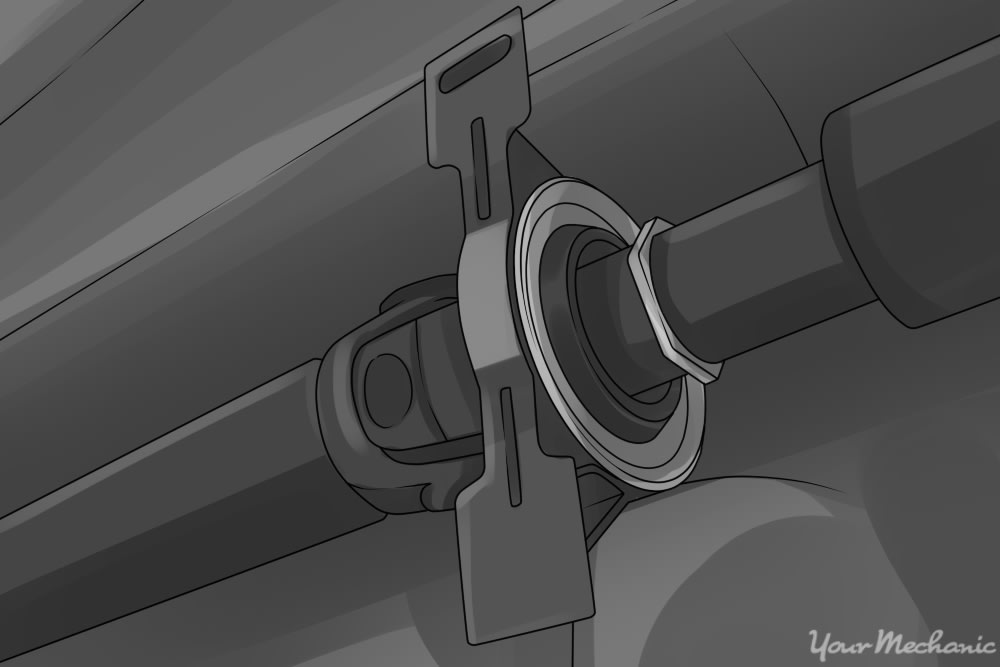
Pace 2: Secure the driveline. Use a bungee or a strap to support to the driveline. This volition forbid the driveline from falling on you lot when separated from the flange/yoke.

Pace 3: Remove the driveline mounting bolts. These are located where the driveline and beam meet.
Step iv: Separate the driveline. Using a mallet or plastic hammer, strike the finish of the driveline away from the flange.
Once the driveline is separated from the flange, yous tin can either tie it up and out of the way or remove information technology completely from the transmission.
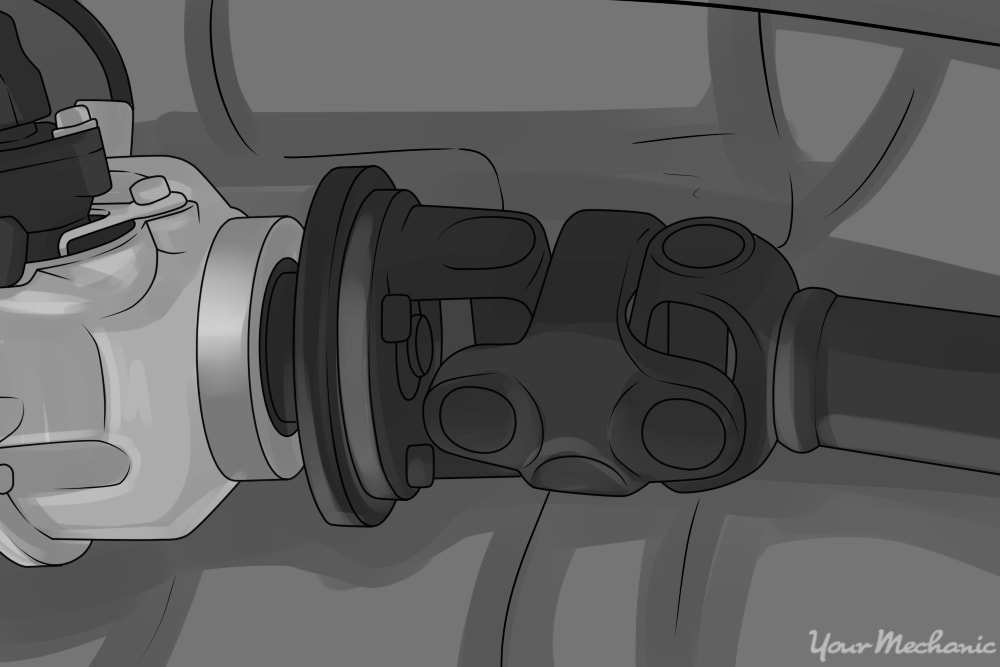
- Notation: If you decide to remove the driveline, place a drain pan underneath the terminate of the transmission. The image above shows where the fluid volition come up out and where to prepare drain pan. The other end of the driveline will slide out of the transmission and fluid will drizzle out and into the drain pan.
Part iii of 8: Removing the axle flange
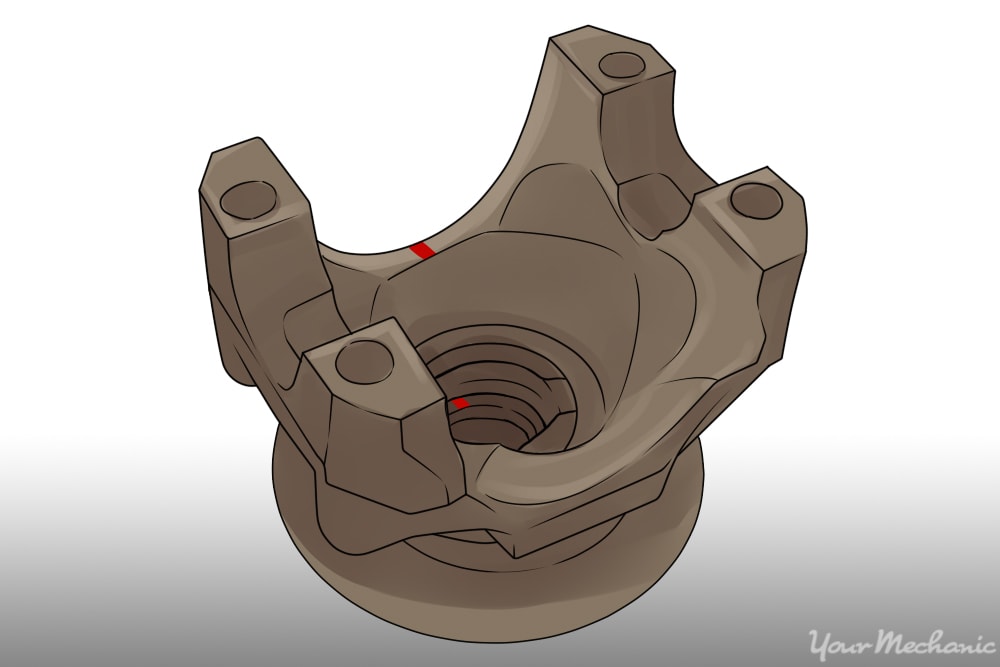
Pace one: Make reference marks. Mark the position of the flange and pinion shaft with a paint pen. You will besides want to count the exposed threads and write the number down.
This is done so the right corporeality of torque is applied and information technology won't be overtightened.
Pace 2: Remove the flange/yoke nut. Remove the mounting nut on the flange/yoke.
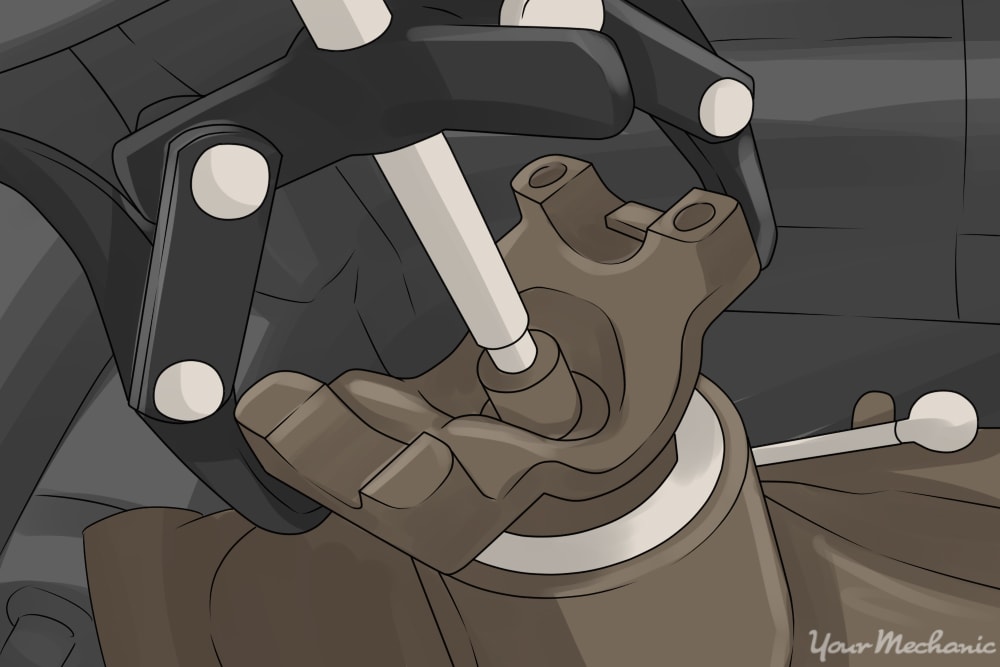
Step 3: Install the puller. To remove the flange/yoke, you will need to use a puller. Install the puller so that it is secure and will pull the flange/yoke off evenly from the pinion.
The driving shaft of the puller needs to be centered every bit in the paradigm higher up. The arms of the puller will need a solid square edge to pull on.
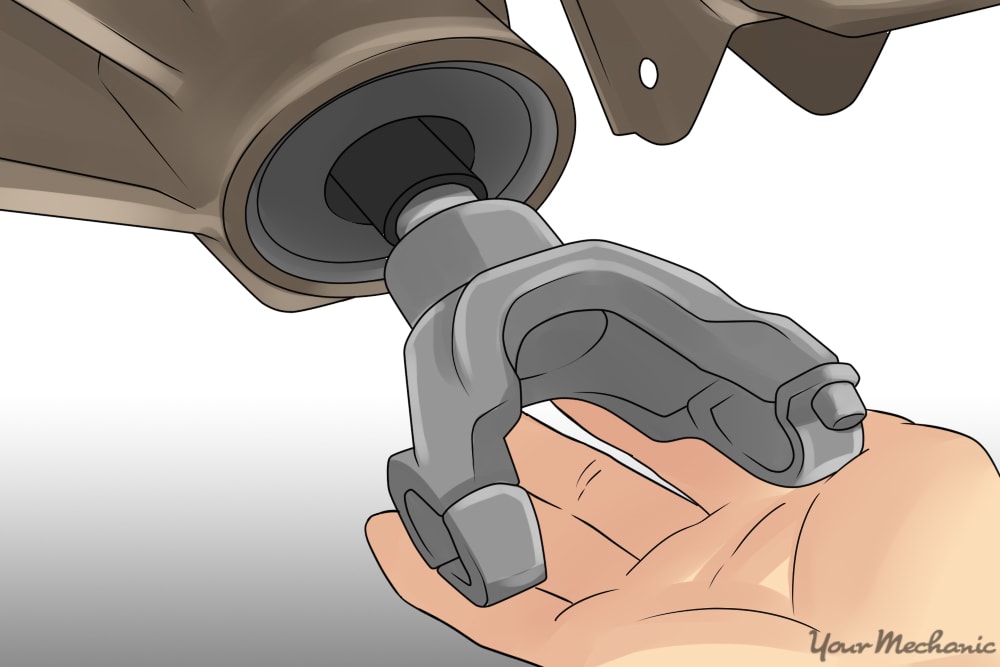
Pace 4: Employ the puller to remove the flange/yoke. Once the puller is in place and mounted, by slowly tightening the drive shaft it will begin pulling the flange/yoke off the pinion shaft.
In almost cases, keep driving the center shaft until the the flange comes loose and off the pinion shaft.
Part 4 of 8: Removing the pinion seal
Step i: Set upwardly a drain pan. Identify a drain pan underneath the pinion seal surface area.
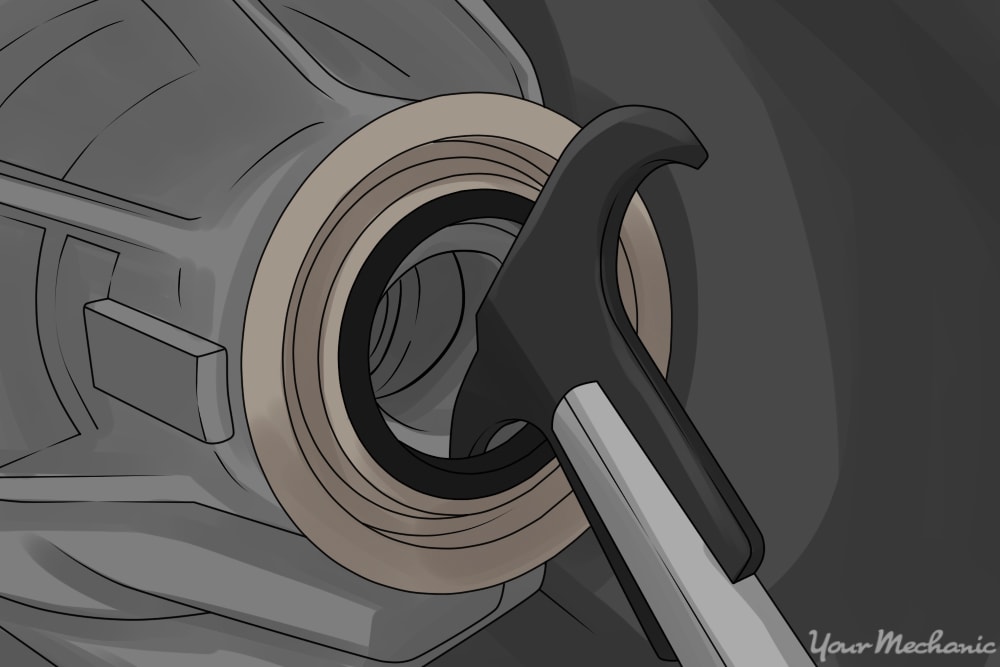
Pace ii: Remove the seal. Take a seal puller, hook the within of the seal and pry to remove the seal. Information technology may accept a couple of different placements to become it removed.
Step 3: Prep the area. After the pinion seal is removed, clean the within surface of the pinion seal mounts.
Get any clay and grime removed and the surface cleaned and prepared for the new seal.
Part 5 of 8: Installing the new pinion seal
Step 1: Employ RTV silicone. Apply a thin layer of RTV silicone on the mating surface of the new seal. The mating surface will in near cases have an orange or green sealing surface.
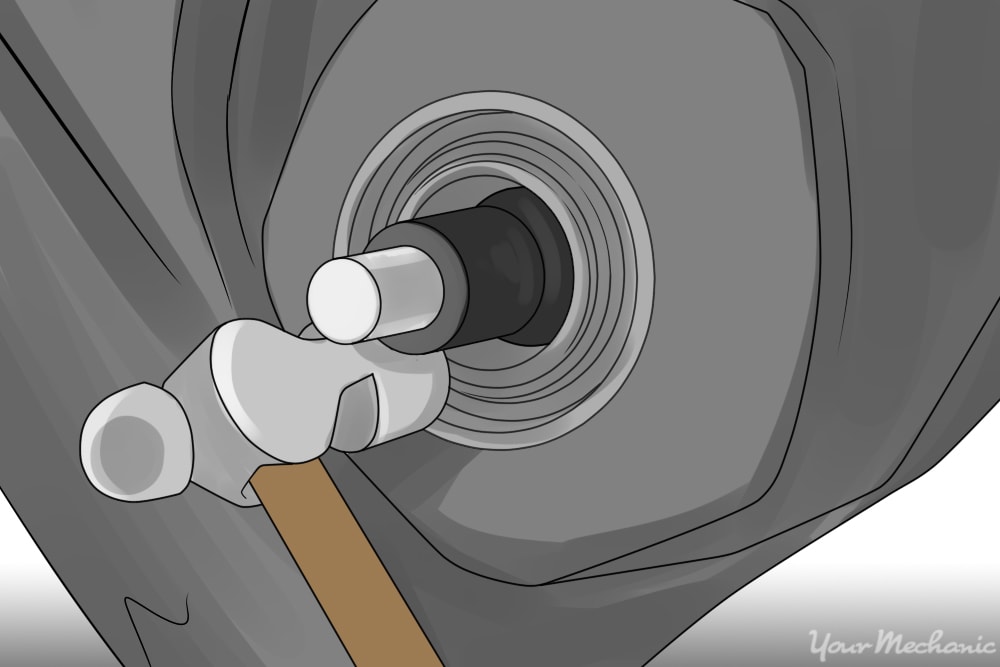
Pace 2: Install the new pinion seal. Position the seal according to how it needs to be installed against the axle housing.
With the seal in position, begin tapping on a seal edge to begin seating it. When tapping, tap in a cross blueprint and so you are installing the seal as evenly as possible. Doing this will prevent any harm to the new pinion seal.
Once the seal begins to seat, tap the seal until it is affluent with the beam housing. Afterward it is installed, inspect the seal to be certain it is flush with the axle housing.
Part 6 of 8: Installing the axle flange/yoke
Step ane: Use RTV silicone. Apply a modest dewdrop of RTV silicone to the inside of the flange/yoke on the splines.
Pace 2: Employ lubrication where needed. Apply a thin layer of grease to the smooth surface that is going into the pinion seal.
Step 3: Install the flange/yoke. Make sure to friction match the reference marks that you made.
Step iv: Seat the flange/yoke. Once the flange is in place, you may demand to use a mallet to get the flange/yoke to seat enough to become the washer and nut started.
Step 5: Apply silicone to the pinion washer and install. Before tightening the nut, put a small dewdrop of RTV silicone on the within of the apartment washer.
Install the washer and nut onto the pinion.
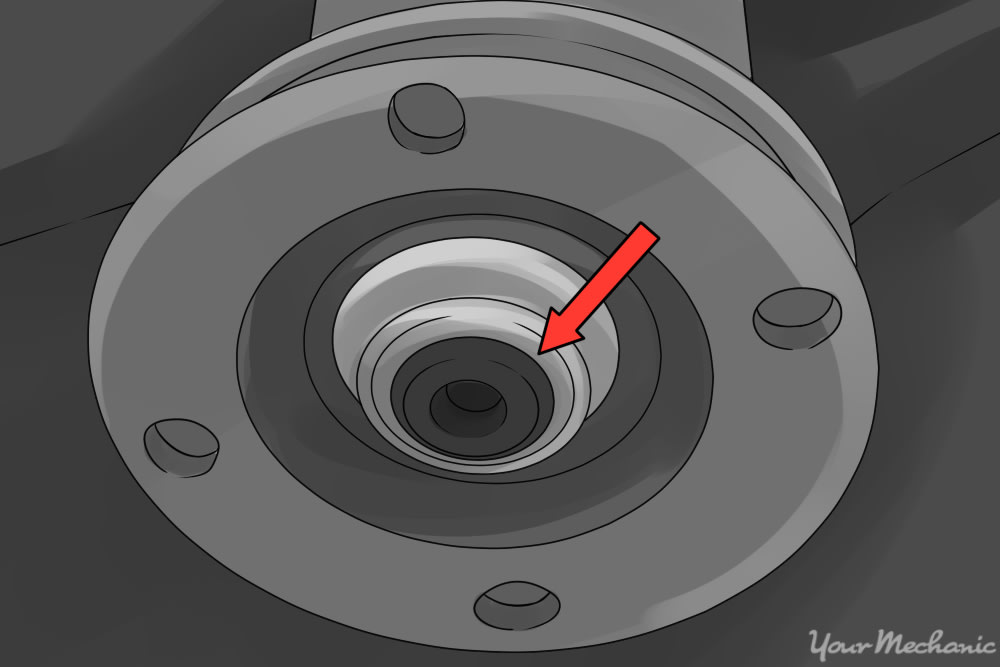
Step half-dozen: Tighten the pinion nut. As you lot are tightening, inspect later every turn to spotter the reference marks and to proceed an centre on the number of threads exposed on the end of the shaft (where the cerise arrow points in the prototype above).
Step 7: Line up the reference marks. When you lot achieve the number of threads needed, cheque the paint marks to run into if they are lined upwardly as yous marked.
If they are not lined upwardly, you may have to tighten it up slightly to match.
Part 7 of 8: Installing the driveline
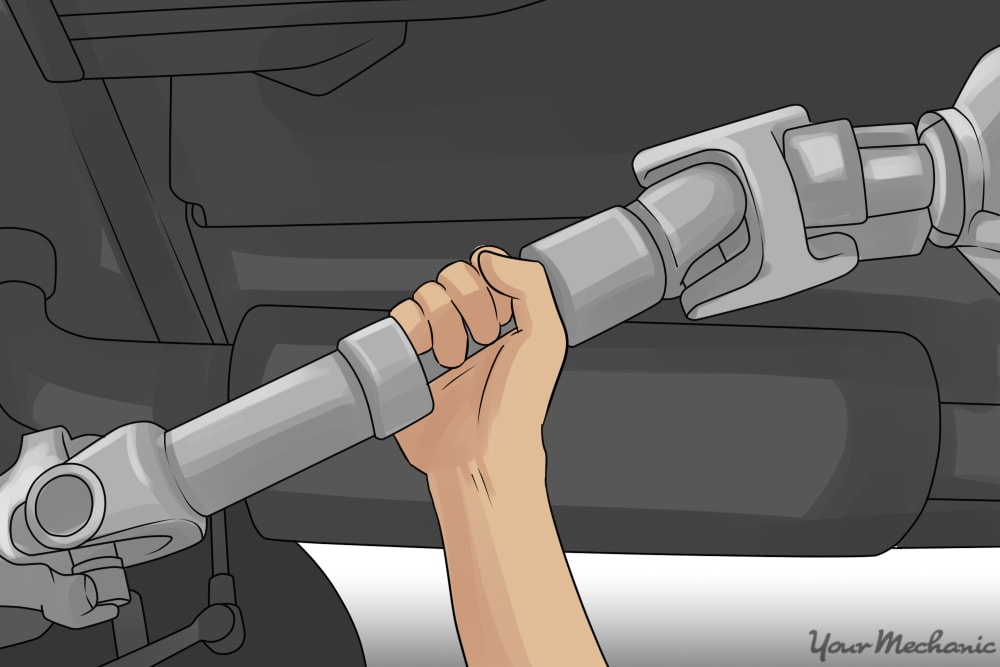
Step 1: Reinsert the driveline. If you lot removed the driveline earlier, start by inserting the driveline carefully into the transmission extension housing.
If you just secured the driveling without removing it, but release the drive line from where it was tied up.
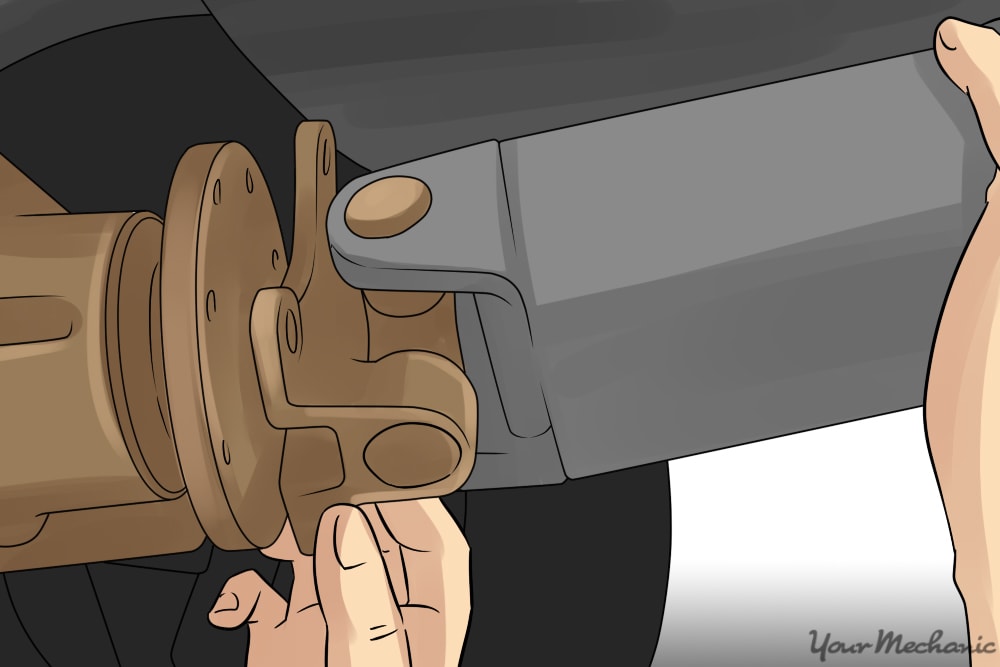
Step 2: Mount the driveline. Lift, line up, and mountain the driveline to the flange/yoke.
The driveline slides in and out of the transmission; this will requite y'all the travel needed to accommodate and mountain the driveline.
Step three: Mountain and tighten the bolts. Once you have the flange/yoke in place, showtime the mounting bolts. Tighten the mounting bolts to specifications.
Function 8 of 8: Lowering and checking fluid levels

Step 1: Remove the beam make full plug. You lot will use your finger to cheque the beam fluid level. The fluid level should be just below the make full hole. If it is low, add what is needed.
Step 2: Raise the vehicle. Raise the vehicle off the jack stands.
Step 3: Remove the stands. Remove the jack stands and lower the vehicle by releasing the jack.
Step 4: Release the brake. Release the parking brake now that your vehicle is safely on the ground.
Replacing a leaking pinion is very important in preventing any major repairs. The pinion seal leaking is a practiced indicator that something needs attention. If replacing your pinion seal is something you would rather leave to a professional, have one of YourMechanic'south certified technicians perform the replacement.
The statements expressed above are only for informational purposes and should be independently verified. Delight see our terms of service for more details
Source: https://www.yourmechanic.com/article/how-to-replace-a-pinion-seal-by-michael-gonzales

0 Response to "How To Remove Pinion Yoke Nut"
Post a Comment